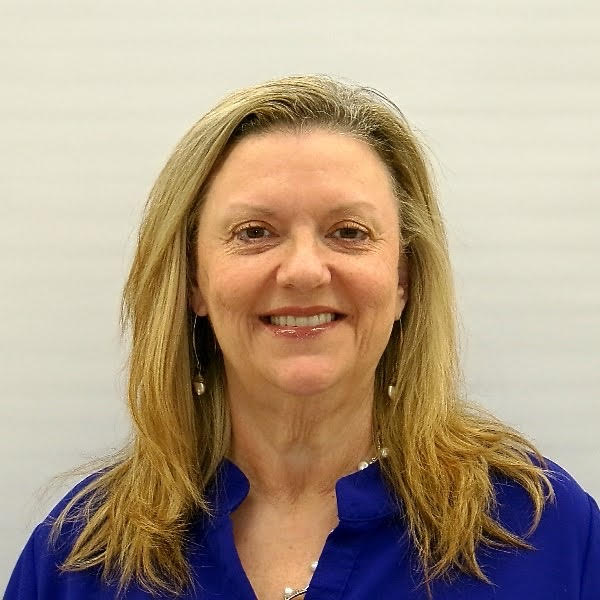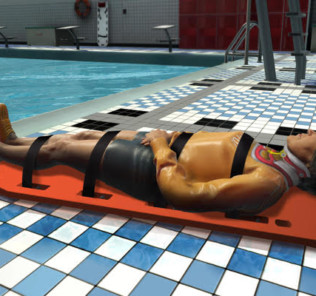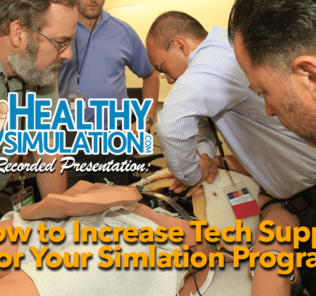NLN Simulation Innovation Resource Center (SIRC) Homegrown Solutions
HomeGrown Solutions was created by education professionals to address problematic issues in healthcare simulation. In 2007, Meg Meccariello presented low-cost solutions at a podium presentation at the International Nursing Association for Clinical Simulation and Learning (INACSL). The following year, a HomeGrown Solutions Contest began a rich legacy for innovative, cost-saving solutions to common health care simulation issues.
One could say that “Clinical Simulation is only limited by the simulationist’s imagination”. In 2015, NLN and INACSL collaborated to grow HomeGrown Solutions as part of the Simulation Innovation Resource Center (SIRC). The HomeGrown Solutions website captures and houses innovative solutions to address problems and solutions created to enhance simulation experiences. This HealthySimulation.com article by Teresa Gore, PhD, DNP, APRN, FNP-BC, CHSE-A, FSSH, FAAN, reviews the HomeGrown Solutions to solve common problems in nursing simulation.
Process to Submit HomeGrown Solutions for Nursing Educators
Sponsored Content:
Simulators can submit their self-constructed, creative adaptations to existing pedagogical strategies, simulation recipes, and other ideas for teaching and evaluation four times a year.
- January 15
- April 15
- July 15
- October 15
Each submission includes objectives for use, ideas to integrate the solution into the curriculum, and step-by-step instructions to provide a road map for replication. An INACSL committee reviews all submissions and selects those deemed worthy to share with the entire network of simulation educators. Accepted solutions are selected yearly for recognition at a special presentation during the annual INACSL conference, typically held in June. The five categories for HomeGrown Solutions are enhanced manikin functionality, equipment, medical supplies, moulage, and solutions for everyday simulation issues. Here are some recent examples of HomeGrown Solutions.
Enhancing Manikin Functionality
- Hybrid Fidelity Manikin for Gastrointestinal Bleed: Gastrointestinal (GI) bleeding does not lend itself to in situ training. Emergency medicine physicians wanted to train residents on GI bleed but did not have a valid trainer to use for simulation. The simulationists used a no longer working adult manikin and replaced its insides with a simulated stomach and tubing that led to a bucket filled with simulated blood. The tubing is attached to an aquarium pump inside the bucket that pushes the blood through the new GI tract and out of the manikin’s mouth. This allows the simulation educators to enhance function to replicate a patient with an upper GI bleed.
- Portable Speakers for Manikin Voice Work-Around: To enhance fidelity and immerse learners in realistic communication with simulated patient manikins, a variety of commercially available, low-cost portable speakers and microphones can be used to overcome technology limitations and glitches that render manikins silent and reduce the opportunity to simulate important conversations. The solution is to incorporate low-cost, portable speakers and headsets to provide pillow speakers for manikins that either lacked voice conferencing technology or for which the technology did not function reliably. Students most frequently commented in simulation evaluations that communicating with the manikin was glitchy and unreliable. The simple solution is a portable, chargeable, wireless speaker placed under the manikin-patient’s pillow and a headset with a microphone worn by the simulation operator/facilitator in the control room. The solution provides audible, clear, reliable, real-time, seamless manikin-student communication.
- Aseptic Foley Urine Collection from a Urosepsis Patient: Cleaning manikin bladders after simulated urine containing sediment is used is difficult. One solution is to place a plastic food storage container between a manikin’s legs, which can be used instead of a manikin bladder when learners need to practice collecting urine from a patient with urosepsis. A catheter can be attached to the manikin, and learners can clamp tubing and practice drawing from the port.
Simulation Equipment
Sponsored Content:
- Repurposing Urinary Catheter to IV Sites: Every year, there is an OSCE skill in urinary catheterization, which leads to used urinary catheter waste. At the same time, working IV sites for manikins and standardized participants are required to increase realism during simulation scenarios. The use of this latex urinary catheter acts as a peripheral vein, which enables IV fluid infusion on both manikins and standardized participants during simulation scenarios. The solution is to repurpose urinary catheters for new use as an IV site.
- Simulating Spontaneous Breathing in Ventilated Patients: Most patients receiving mechanical ventilation support have spontaneous breathing ability, but many manikins have no or insufficient inspiration features. This limits the role of ventilator simulation with critical care or operating theatre background. This unique idea is to modify the ventilation circuit in test lungs with a negative pressure trigger. This generates spontaneous and assisted breaths in the ventilator, which, in succession, activate each manikin’s breath cycle and lung sound. The application of this technical solution does not require manikin modification.
Medical Supplies – no recent submissions
Moulage Ideas
- Unexpected Encounters with Body Decorations: Non-traditional jewelry, accessories, or body hair on patients can be surprising for students, which can lead to a noticeable change in care for the patient. Instructors can identify and address biased care toward patients with body decorations by simulating tattoos, body piercings, various wig colors, and long facial hair on manikins. By adding these body decorations in the simulation, an instructor can address unsafe practices in a controlled environment.
- Reusable Silicone Wound: Setting up a simulation can be challenging due to time, money, and moulage skill. Many wounds that can be purchased are difficult to stick on a standardized participant or a manikin and can be costly. Moulage can stain manikins and take time to do and redo for the same simulation. The idea is to make a reusable wound that is inexpensive and versatile.
Solutions for Everyday Simulation Issues
- Simple Foley / NG Tube Task Trainer: The onset of COVID-19 has forced undergraduate nursing programs throughout the country to move the majority of skills instruction from nursing laboratories to the virtual environment. To provide nursing students with the ability to practice and test at home successfully, the simulation educators created a cardboard skills task trainer for NG tube insertion, female foley catheterization, and basic tracheostomy care. This allowed us to continue skills practice and testing in the event of a campus closure or if students were unable to come to campus due to Covid exposure. The use of these task trainers allows learners to use these task trainers in any location and at any time.
- Operating High-Fidelity Manikins Remotely: Social distancing during the COVID-19 pandemic was implemented to decrease the spread of COVID-19. To overcome capacity limits of people in the control room, the Health Simulation Learning Centre team collaborated with the IT department to gain remote access of all manikins and computers. This allowed the simulation technicians to operate remotely while the situationist watched from the control room.
How are HomeGrown Solution Submissions Evaluated
HomeGrown Solutions are evaluated by an INACSL Committee after the four annual deadlines for submissions. Each solution is rated based on the uniqueness of the idea, identification of the problem, presentation of the solution, and the ability of others to replicate the solution. Photos of the solution during the creation of the solution should be submitted as a visual aid for others wanting to replicate the solution. A video via YouTube can be included.
More About NLN
The National League for Nursing (NLN) has been involved in nursing simulation and clinical simulation research for decades. HealthySimulation.com signed a media partnership to support the NLN in May of 2023. In 2003, the NLN, through a grant from the Laerdal Medical Corporation, began a three-year, multisite study to explore how to design and implement simulations as a teaching strategy and evaluate selected learning outcomes using simulations. As a result of this research, the Jeffries Simulation Framework was developed. The NLN/Jeffries Simulation Theory evolved from the simulation framework in 2015. This HealthySimulation.com page will explore the contributions of NLN to clinical simulation.
Dedicated to excellence in nursing, the NLN, the nation’s first nursing association, serves as the leading voice for nursing faculty and leaders in nursing education. The NLN offers professional development, networking opportunities, assessment services, nursing research grants, and public policy advocacy for nearly 45,000 individuals and over 1,000 institutional members. NLN members represent nursing education programs across the spectrum of higher education, healthcare organizations, and agencies.
Learn More About HomeGrown Solutions for Your Simulation Needs!
Teresa Gore, PhD, DNP, APRN, FNP-BC, CHSE-A, FSSH, FAAN – Dr. Gore has experience in educating future nurses in the undergraduate and graduate nursing programs. Dr. Gore has a PhD in Adult Education, a DNP as a family nurse practitioner, and a certificate in Simulation Education. Dr. Gore is an innovative, compassionate educator and an expert in the field of healthcare simulation. In 2007l Teresa started her journey in healthcare simulation. She is involved in INACSL and SSH. She is a Past-President of INACSL and is a Certified Healthcare Simulation Educator Advanced (CHSE-A). In 2018, she was inducted as a Fellow in the American Academy of Nursing (FAAN). In 2021, she was inducted as a Fellow in the Society of Simulation in Healthcare Academy (FSSH) and selected as a Visionary Leader University of Alabama at Birmingham School of Nursing Alumni. During her career, Dr. Gore has led in the development and integration of simulation into all undergraduate clinical courses and started an OSCE program for APRN students. Her research interests and scholarly work focus on simulation, online course development and faculty development. She has numerous invited presentations nationally and internationally on simulation topics.
Sponsored Content:


















